Contents
1. How to Record Internal Audio on Mac using Vmaker
2. Record Computer Audio on Mac using Movavi Screen Recorder
3. Record Internal Audio on Mac using Aiseesoft
4. Capture Internal Audio on Mac using Awesome Screenshot
5. Record Internal Audio on Mac using Easy Audio Recorder & Soundflower
6. Record Internal Audio on Mac using Audacity
7. Record Computer Audio on Mac using Recordit
8. Record Computer Audio on Mac using QuickTime Player & Blackhole
How To Record Internal Audio on Mac: 8 Simple Ways (2024)
Recording internal audio on Mac is a bit tricky.
Though all Macbooks come with two in-built recorders, none of them are capable of capturing both the internal audio and microphone audio.
But, worry not.
You can get this problem sorted with the help of a third-party Mac screen recording application.
In today's post, we'll show you how to record internal audio on a Macbook using 8 such user-friendly Mac recorders.
Let’s get started!
List of Best Internal Audio Recording Tools
- Vmaker
- Aiseesoft Screen Recorder
- Awesome Screenshot Screen Recorder
- Easy Audio Recorder Lite + Soundflower
- Audacity
- Recordit
- QuickTime Player + Blackhole
1. How to Record Internal Audio on Mac using Vmaker
Vmaker is an advanced screen recorder for Mac that can be used to record, edit, host, and share unlimited number of videos consistently. It provides unlimited cloud storage and comes with no watermark. Currently, it's available for download in 3 versions - as a Chrome Browser Extension, as a Windows screen recorder, and as a Mac screen recorder.
Advantages
- Records screen with internal audio and external audio
- Has no watermark
- Provides multiple recording modes (screen, webcam, and screen + webcam)
- Provides background noise control options
- Provides virtual background options for webcam overlay
- Provides standard HD video quality for paid users and 720p video quality for free users
- Available in multiple languages
Disadvantages
- Requires you to upgrade to access advanced features

Steps involved in recording internal audio on Mac using Vmaker
Step 1: Sign up for Vmaker & download the Mac application to your device.
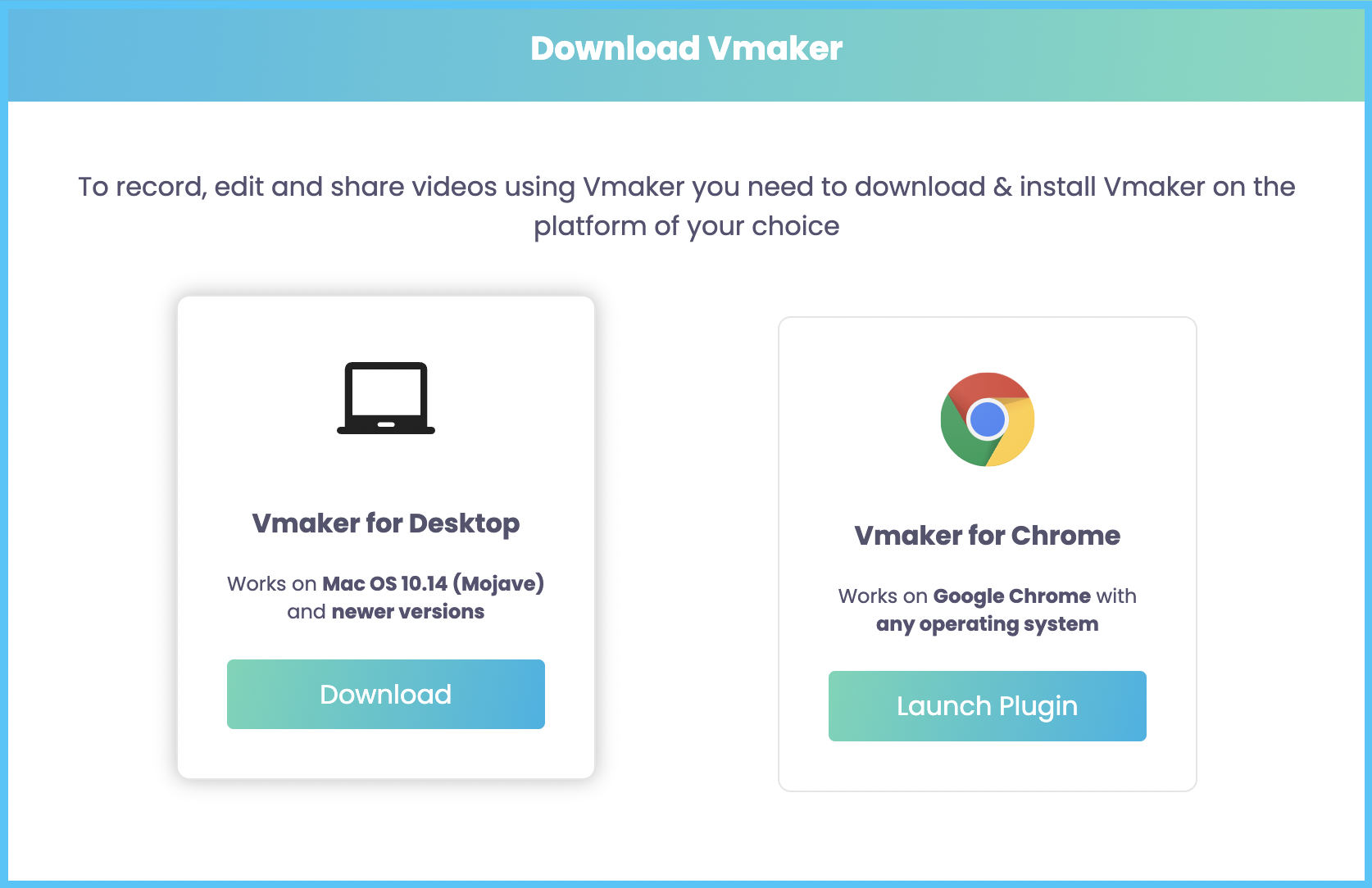
Step 2: As soon as you click on the downloaded file, you will be asked to add Vmaker to your ‘Applications’ folder. Just drag and drop Vmaker into the application folder and complete the installation process.
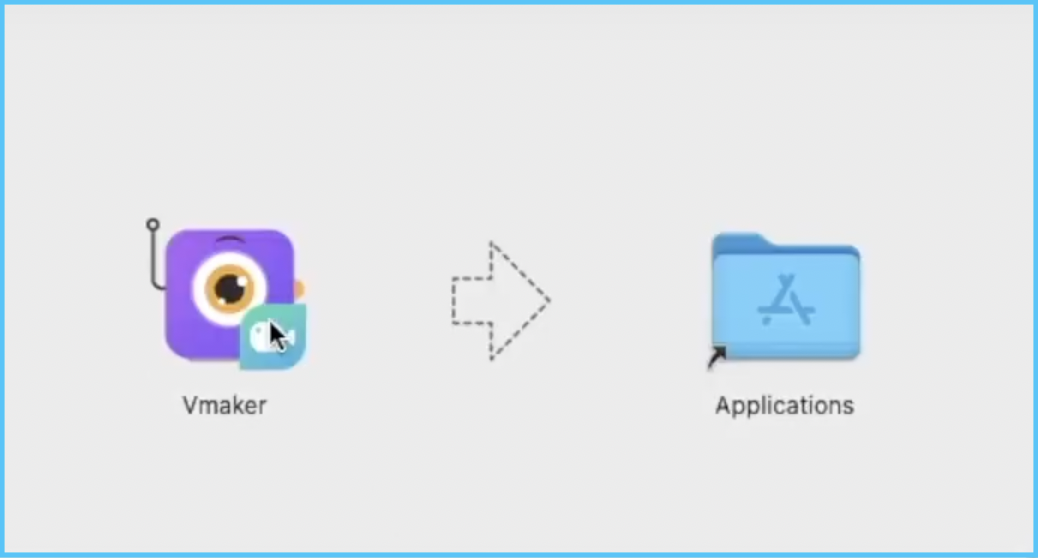
Step 3: Once you are done with the installation process, you can launch Vmaker on your Mac device. As soon as you launch Vmaker, you will be shown a pop-up like the one below.
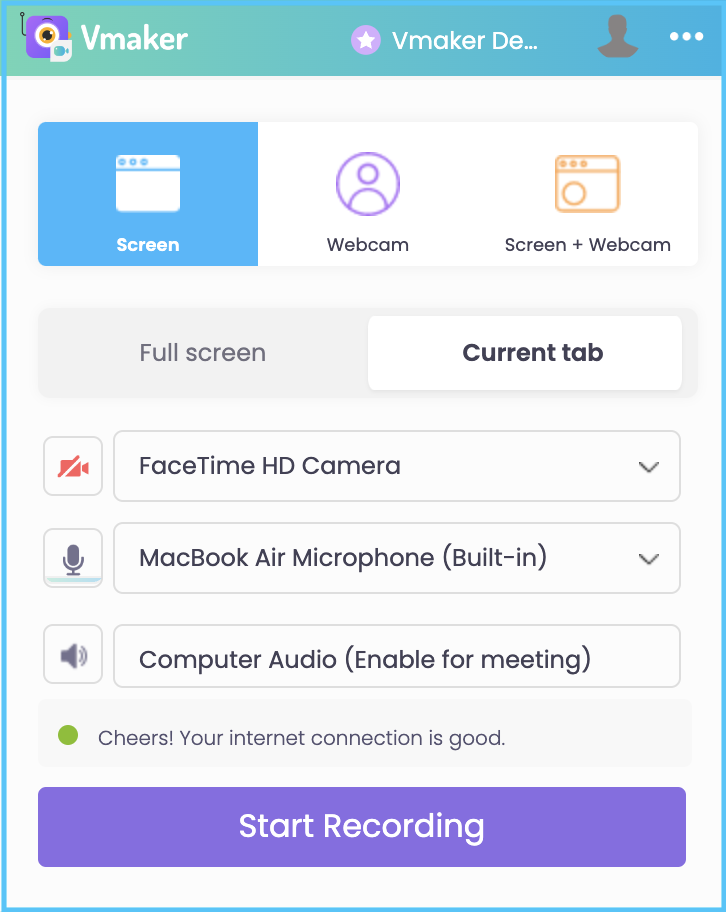
Step 4: This is where you customize your recording requirements. Choose your recording mode, recording area, audio inputs, and video quality.
Additionally, you can also choose to customize your recording a bit further with advanced features. For example, you can highlight your mouse clicks and enable the background noise filter.
To access these options, click on the horizontal dot matrix on the top right corner of your pop-up and choose 'Preferences.'
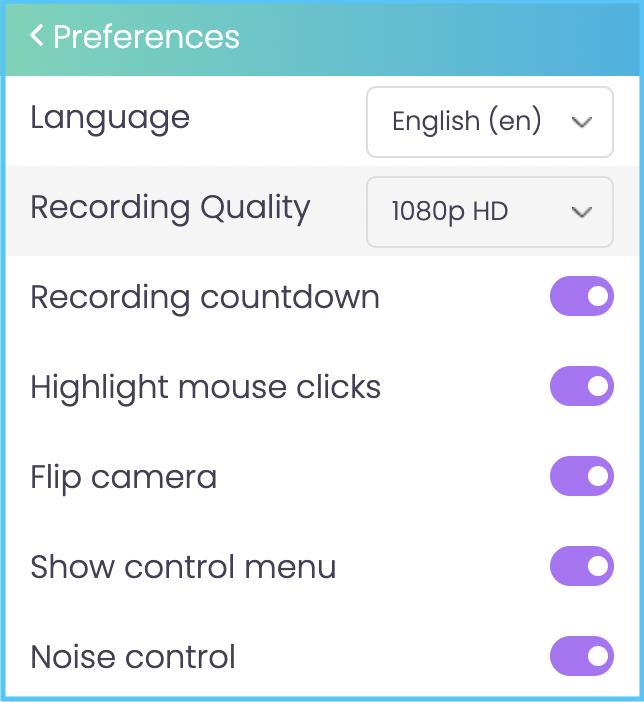
You can turn on the options you wish to include in your recording and proceed.
Step 5: When you're done with your recording, click on the red dock icon on the left corner of your screen and stop the recording.

The recording will now be accessible in Vmaker’s player page from where you can edit, share, and download your video.
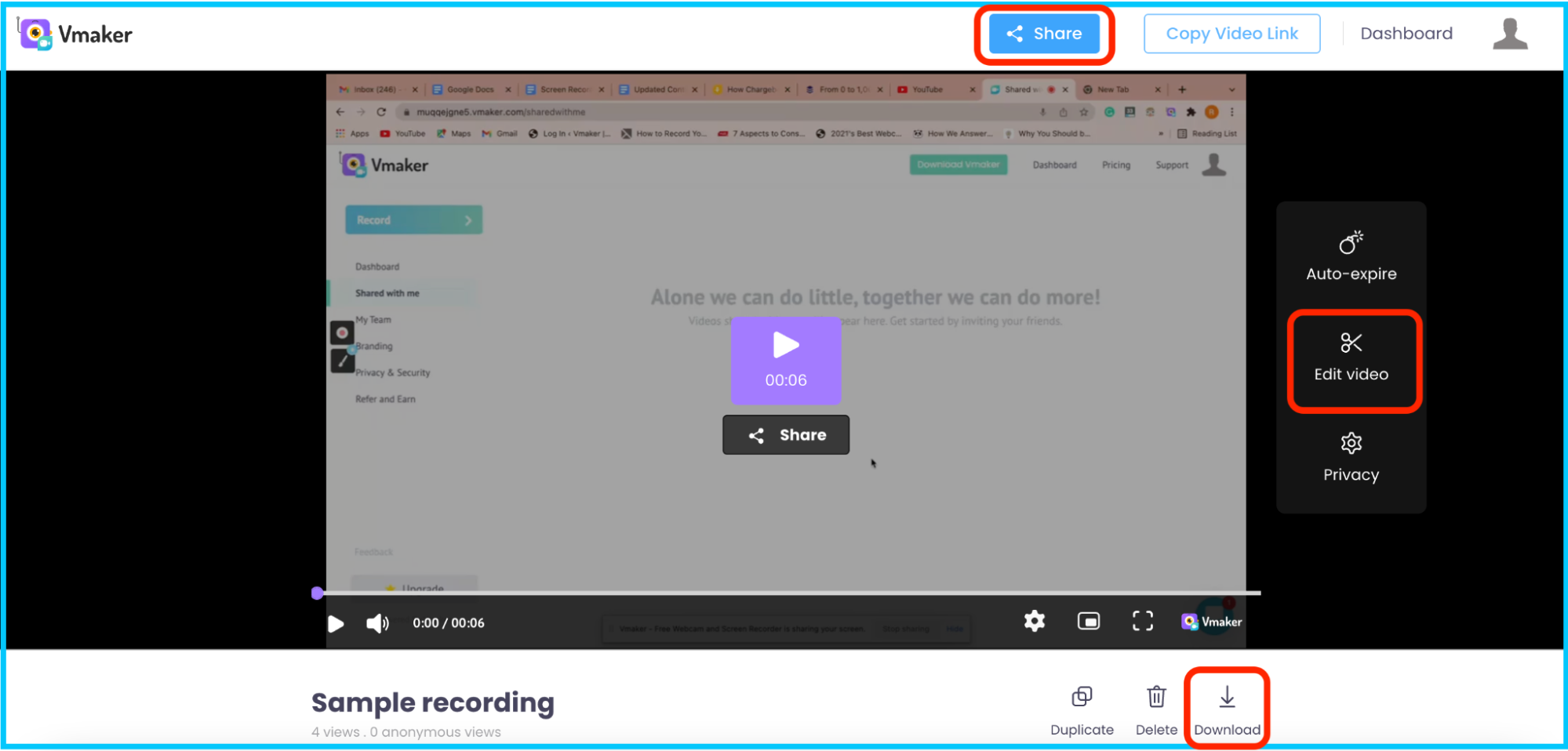
2. Record Computer Audio on Mac using Movavi Screen Recorder
Movavi Screen Recorder is great for capturing webinars, online meetings, streaming videos, or just any other content on your screen. This is a screen recorder for PC and Mac, and it also has a free trial version. You can add annotations, schedule recordings, highlight mouse clicks, and more.
Advantages- Intuitive software
- Has multiple recording modes
- Drawing tools
- Task scheduler
- Export in popular formats and share online
- Not a free screen recorder, requires a subscription to use without limitations.
Steps involved in recording internal audio on Mac using Movavi Screen Recorder
Step 1: Go to the official website, locate the 'Screen recording' tab, and choose Mac as your operating system. Click on 'Download for Free' and follow the instructions to install the software later.

Step 2: If you don't need to record the screen, click the + button on the toolbar and select the 'Audio recording' option instead. There you can see a microphone and speakers icons. In case you don't need to record your voice, click the microphone button to mute it.
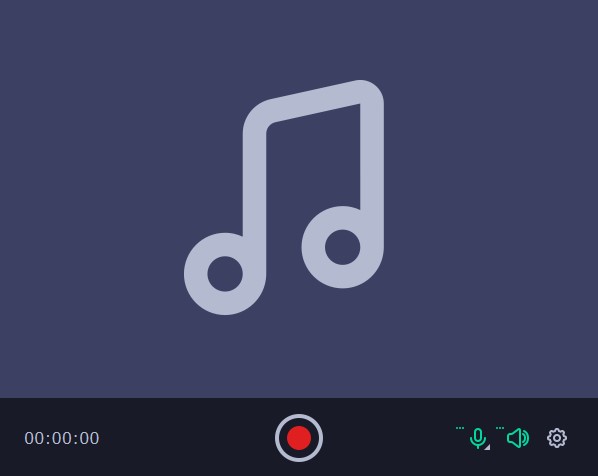
Step 3: Hit that big red 'Start recording' button. After a 3-second countdown, the recording will begin. You can pause and resume if needed. Once you're done, click on 'Stop recording' and you'll be redirected to the editing screen.
Step 4: Cut and trim unwanted fragments in the built-in editor, and then click 'Export' to save the footage wherever you want. Alternatively, you can upload it directly to Google Drive.

3. Record Internal Audio on Mac using Aiseesoft
Aiseesoft screen recorder is a powerful Mac screen recorder that can seamlessly record your screen & webcam with computer audio. It comes with an in-built video editor and allows you to export your videos in multiple file formats.
Advantages
- Has a user-friendly interface
- Available in multiple languages
- Allows you to take snapshots
- Provides multiple editing options
- Provides multiple output formats
- Allows you to add text and lines while recording
- Customer service can be improved
- Free plan only allows you to record videos for 2 minutes
Steps involved in recording computer audio on mac using Aiseesoft
Step 1: Install the Aiseesoft software to your device.

Step 2: Enable the ‘System Sound’ option as shown below. If you wish to record your microphone, you can enable the microphone option as well.

Step 3: Now, you can click on 'Preferences' and select the output file formats you want the video to be recorded in.
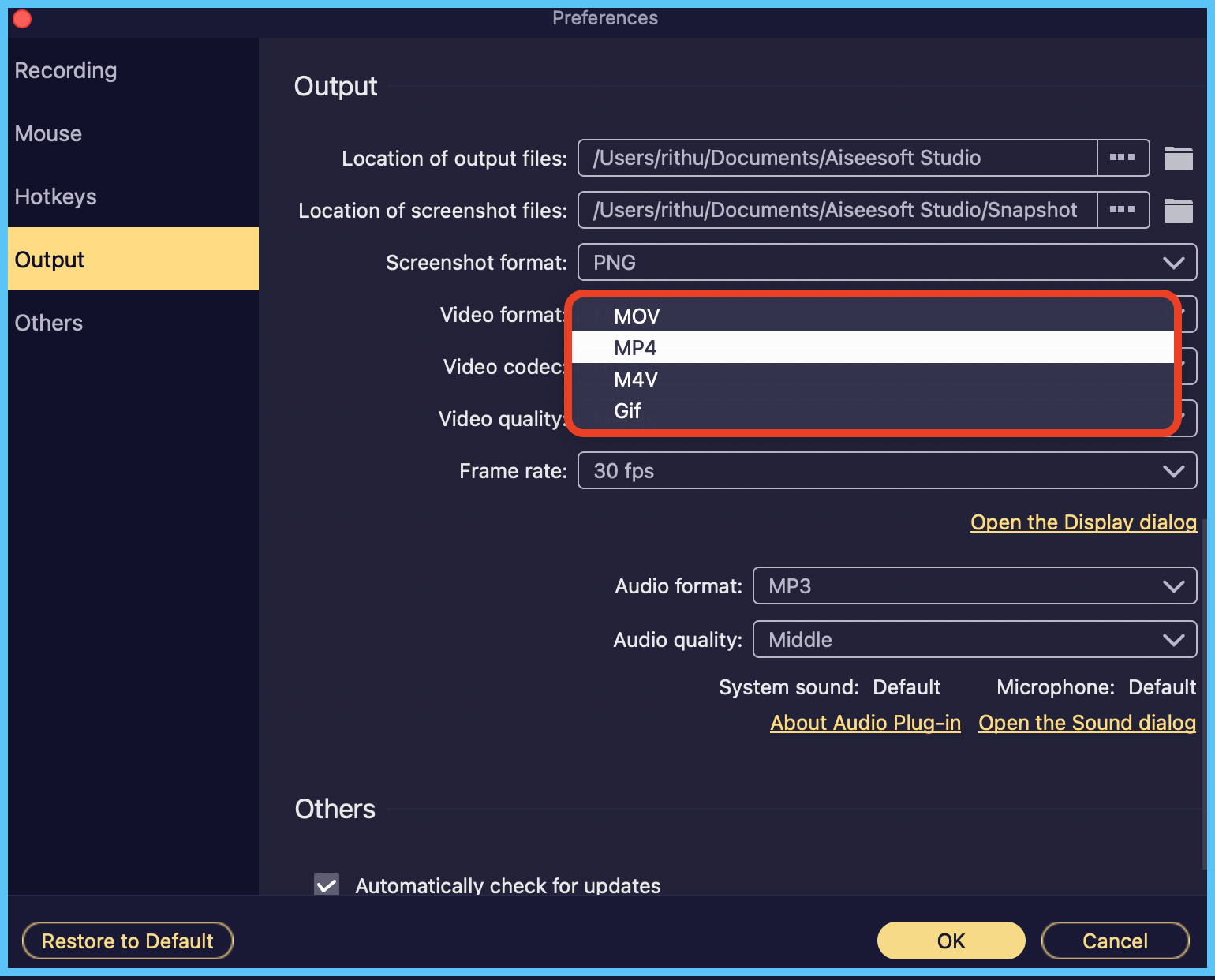
Step 4: When you're ready to record, click on the 'Rec' button.

Step 5: Once done recording, you can play and preview your video as shown below.
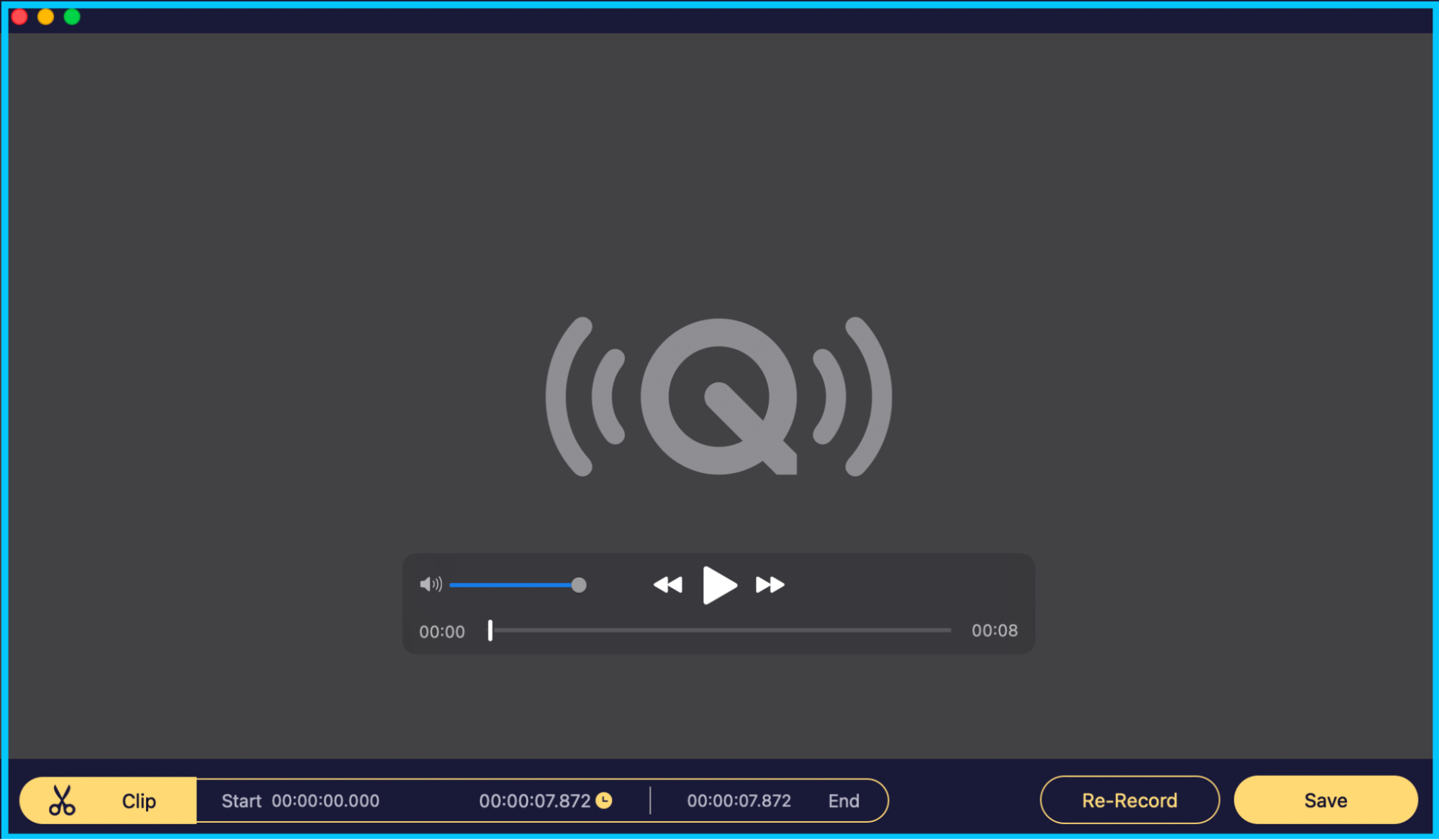
4. Capture Internal Audio on Mac using Awesome Screenshot
Awesome screenshot is a popular screen recorder that's been in the business for more than 10 years. It lets you take quick screenshots with just a click and provides seamless integration with tools like Trello, Asana, Slack, Jira, etc.
Advantages
- Provides cloud storage
- Does not have a recording time limit
- Has no watermark
Disadvantages
- Doesn't capture audio separately
- Does not provide collaboration tools
Steps involved in recording computer audio on mac using Awesome screenshot screen recorder
Step 1: Install the Awesome screenshot recorder from the Mac App Store and launch the application.
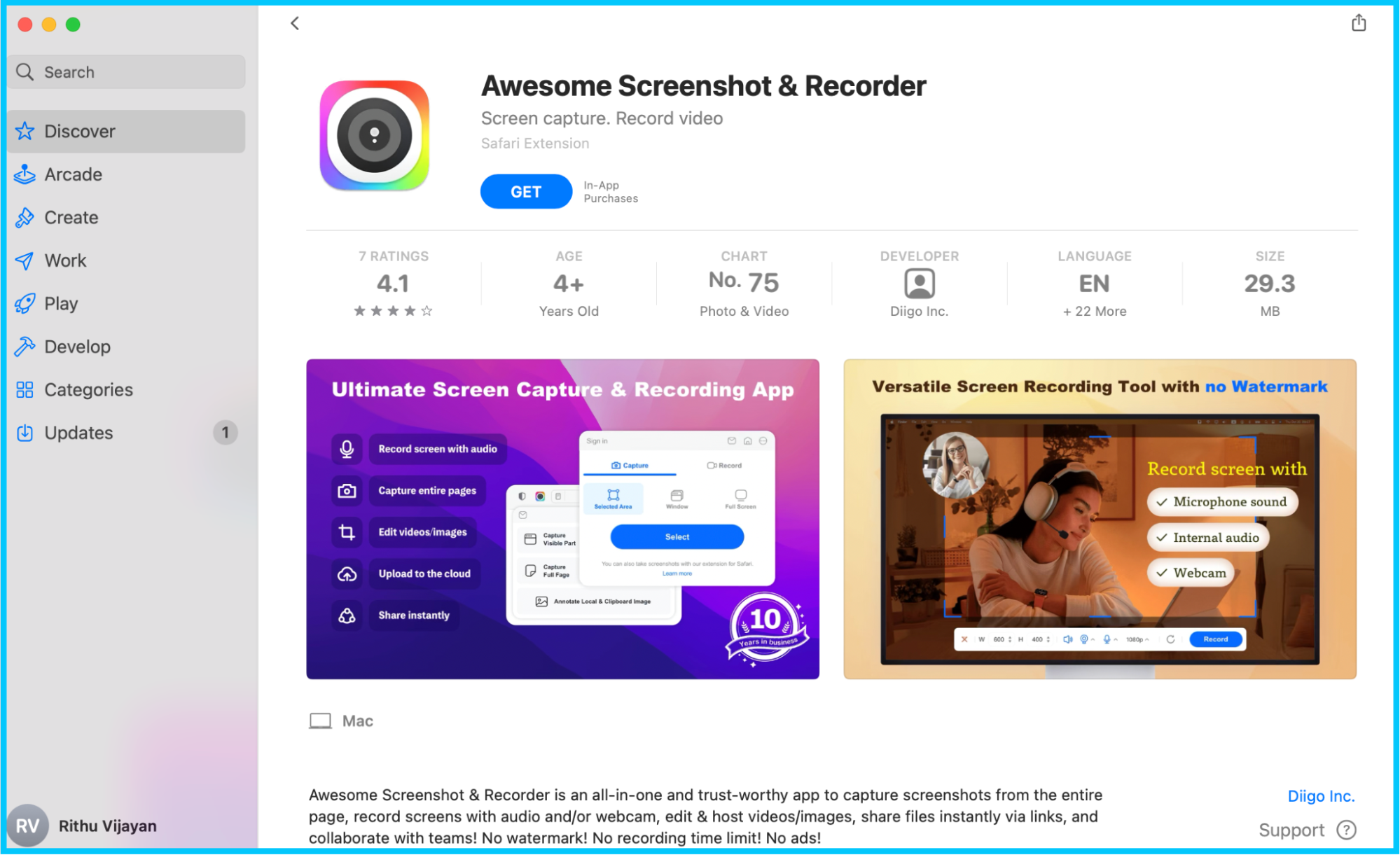
Step 2: As soon as you launch the application, you will be asked to create an account. Sign up for free and log in to your account.
Step 3: Once you've logged in to your account, you can start customizing your recording preferences and start recording your screen.
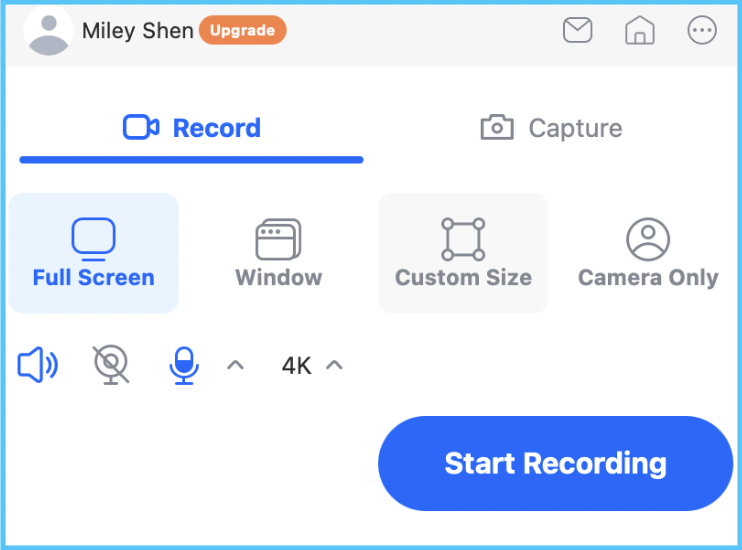
Step 4: As soon as you're done, click on the red icon on the top of your screen to stop the recording.
Step 5: You can now choose to download the video, edit the video, or move it to a different folder or workspace.
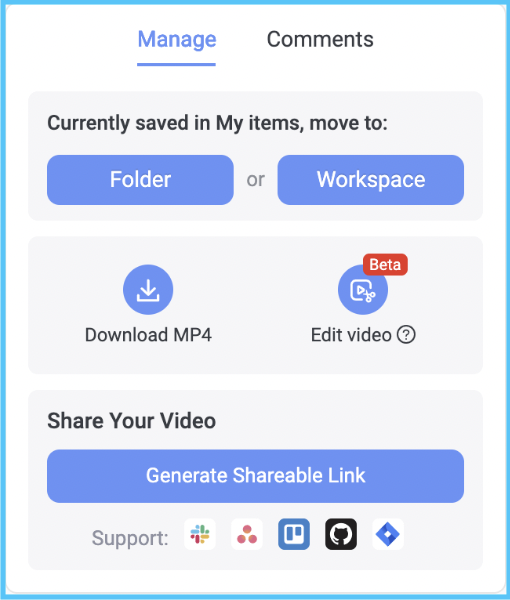
5. Record Internal Audio on Mac using Easy Audio Recorder & Soundflower
Easy Audio Recorder Lite is a lightweight easy-to-use audio recording tool. It is available for download for both Windows and Mac users. In order to capture the internal system sound, you need the help of additional software (like Soundflower or Blackhole).
Advantages
- Lightweight (doesn't take too much of your storage space),
- Shareable via email
Disadvantages
- Needs external software like Soundflower
Steps involved in recording internal audio on Mac using Easy Audio Recorder Lite and Soundflower
Step 1: Download 'Easy Audio Recorder Lite' from the Mac App store and launch it on your device.
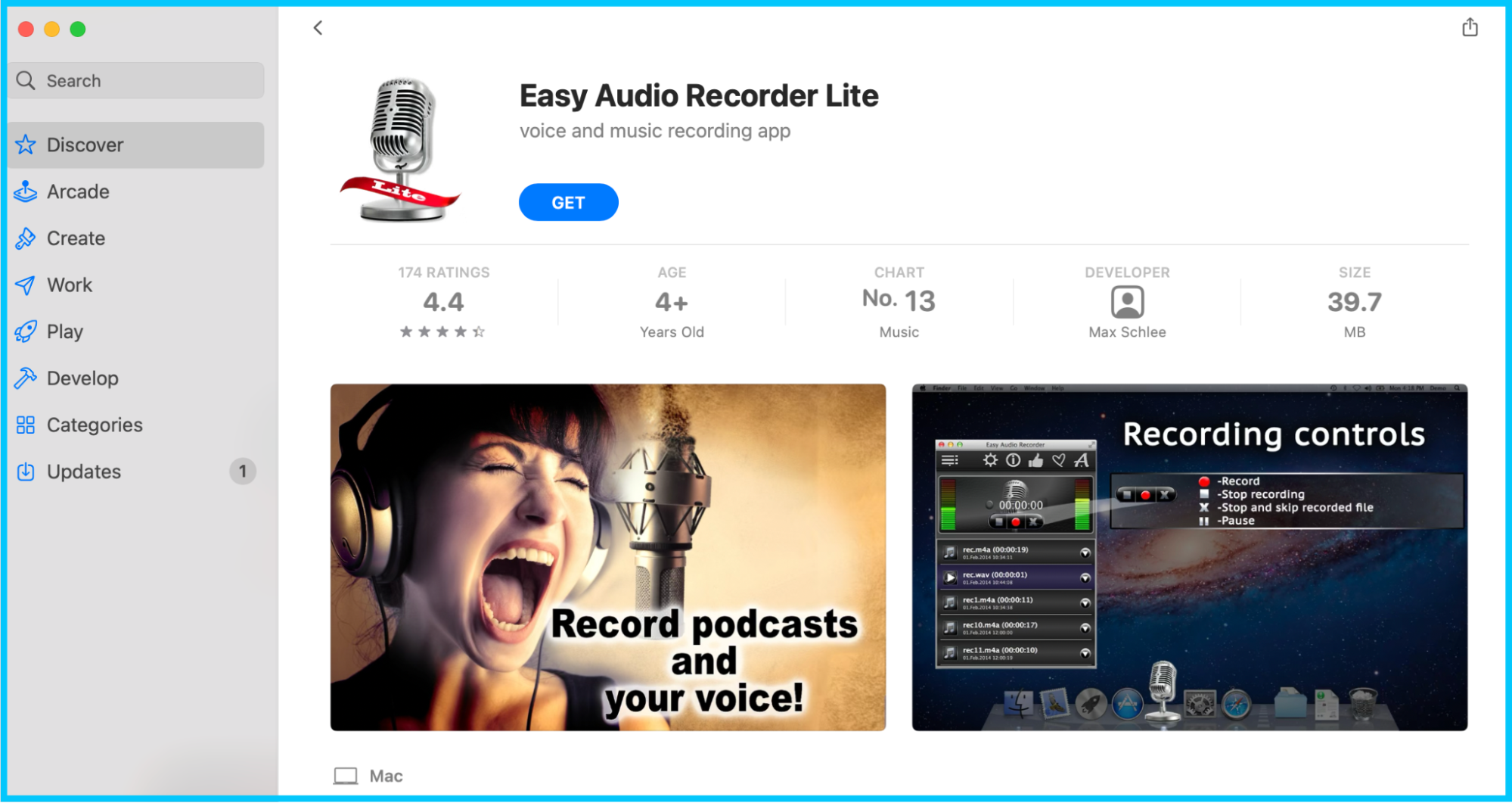
Next, you need to download ‘Soundflower.’ Your system will use it to reroute the internal audio. In order to do this, you need to change the audio output source in your system preferences.
Step 2: Go to 'System Preferences' and select the 'Sound' icon. Then, click on the 'Output' tab. This is where you can select the device you'd like to choose for sound output. Select 'Soundflower (2ch)'.
Step 3: Now, you need to select soundflower as your main recording device in 'Easy Audio Recorder Lite.' Open the application and select 'Soundflower (2ch)' as your input device.

Step 4: You will be directed to the recording screen, where you will have various options to customize your recording. Once you're ready for the recording, click on the 'Record' button.

Step 5: As soon as you're done recording, click on red dock button and save it for future reference.
6. Record Internal Audio on Mac using Audacity
Audacity is an open-source audio editing software mostly downloaded by musicians and podcasters. It is free to download and supported by both Mac and Windows operating systems. This audio editing software allows users to play, record, edit, import, and export MP3, AIFF, and WAV files. The best thing about Audacity is that it lets you record both the internal and external audio from your MacBook.
Advantages
- Noise removal feature
- VST plug-in effects
- Bass Boost feature
- Comes with a built-in frequency analysis window
- A built-in amplitude editor and
- Available in multiple languages
Disadvantages
- Requires an additional software that has to be downloaded
- Cannot be used to record videos
Steps involved in recording internal audio on Mac using Audacity and Soundflower
Step 1: Download Audacity from the official website. Along with Audacity, you should also download an additional tool like Soundflower.
Step 2: Once you've downloaded both Audacity and Soundflower, head over to System Preferences and select 'Sound'. You would be asked to select a device for sound output. Select 'Soundflower (2ch)'.

Step 3: Now, you are free to record audio using the Audacity software. Open the software and choose 'Soundflower' as your recording device. Then, you can head over to 'File' and create a new project. In the top left corner of the screen, you will be able to see the Pause, Play, and Record buttons. Click on the red ‘Record’ button to start recording.
Once you're done recording, you can stop the recording by clicking on the 'Stop' button.
Step 4: And, when you’re done with the editing process, you can edit and export your recordings in any of the desired file formats - WAV, MP3, or AIFF.
7. Record Computer Audio on Mac using Recordit
Recordit is a free screencast tool that helps you create audio presentations and gifs seamlessly. It allows you to record screen audio for 5 minutes. If you wish to unlock more advanced features, you need to subscribe to its pro version.
Advantages
- Lightweight
- Easy-to-use interface
Disadvantages
- Needs a subscription to unlock premium features
- Allows users to record only for five minutes.
Steps involved in recording internal audio on Mac using Recordit
Step 1: Download Recordit from the official webpage and install it on your device.
Step 2: Then, head over to 'System Preferences' and select the 'Sound' icon. Now, you can click on the 'Input tab' and choose 'Internal Microphone'.
For enabling the output source, you can click on the ‘Output’ tab, and select 'Aggregate Device'.

Step 3: Now, you can open Recordit and choose 'Aggregate Device' as your audio source. Additionally, it also allows you to customize your preferences in case you'd like to customize it according to your own preference. You have three basic choices to select as your Audio Source - microphone audio, system sound, or both (system sound and microphone audio).
Step 4: Once you're done with the recording, click on the 'Stop' recording button. The recording will automatically be saved in the Recordit server. You would also be able to download the file to your device for future reference.

8. Record Computer Audio on Mac using QuickTime Player & Blackhole
The only problem that Mac users face with QuickTime Player is that it doesn't capture the internal audio from a system. You need to download additional tools such as 'Blackhole' or 'Soundflower'. Blackhole is a good replacement for Soundflower. In case you're not comfortable using Soundflower, you can download Blackhole.
Advantages
- Free to use
- Simple to use
- Offers 16 channels of audio output and input
- Can additionally be configured to accommodate 256 channels
Disadvantages
- Records all the audio on a single file
Steps involved in recording internal audio on Mac using QuickTime Player and Blackhole
Step 1: Download Blackhole from the official webpage. Once the download is over, open the program and search 'Setup' in the spotlight search.
Step 2: To set up Blackhole on your device, you will have to create a new 'Aggregate Device' that enables you to combine both Blackhole (for recording internal audio) and your microphone (for recording external audio). In order to do that, head over to Audio Midi Setup and set up a new 'Aggregate Device' combining both these options (blackhole and microphone).
Step 3: Restart QuickTime Player and choose ‘Aggregate Device’ as your ‘Input’ for the recording.
Step 4: In order to hear your internal audio while recording, you will have to set up a multi-output device in the Audio Midi Setup with two options (that includes both your microphone and blackhole). Now, head over to Sound Preferences and select 'multi-output device'. Make sure you select Blackhole as your multi-output device.

Step 5: Now, you can easily start recording your audio. Open QuickTime Player and select 'New Audio Recording' under the 'File' menu. You will see a drop-down option next to the record button. Click on the drop-down option and select 'Aggregate Device'. Just make sure you have enabled the 'blackhole checkbox' as your audio device source in the Aggregate Device tab.
Frequently Asked Questions
1. What are some tools uswd to record audio & video for Mac users?
- Vmaker
- Audacity
- OBS Studio
- Monosnap
- Snagit
2. Can I record both internal audio and external audio using QuickTime Player?
You would not be able to record internal audio using QuickTime Player. In order to record internal audio, you need to download an additional tool like Soundflower or Blackhole.
3. What are the features available for free users in Vmaker?
There are a ton of features available in Vmaker for free users. Most of the basic requirements needed for video creators are available for free. Some of the prominent features include:
- Unlimited number of recording
- Noise cancellation feature
- Provisions to switch across tabs and windows during your recording
- Access to record webcam, screen, and both simultaneously
4. How to record internal audio on Mac without using Soundflower?
If you're not comfortable using Soundflower, you can try using Blackhole. It's a great alternative for Soundflower and can run smoothly on the latest Mac versions.
5. Can QuickTime record internal audio?
Yes, QuickTime can record internal audio. Just follow these simple steps:
- Open the QuickTime application
- Go to sound settings within the system preferences, and choose your audio input channel. You can either choose internal speakers or headphones.
- Click on the New Audio Recording tab to record a new audio track.
- A gray panel appears on the screen. Click on the Start button and choose your output devices.
- Once you're done recording, you can either save the recording in your local storage or upload it to your cloud storage.
6. Does Mac have an in-built recorder?
Yes. Mac does have an in-built recorder called QuickTime Player. But, it's not built to record computer audio and microphone audio at the same time. For that, you will have to use a screen recorder like Vmaker.
7. How to record my Mac screen without external sound?
If you wish to record your Mac screen without external sound or background noises, you can use a screen recorder like Vmaker. It has a background noise control feature that lets you record videos without any background noises.
Recommended Reads:
- How To Record Your Computer Screen For Free
- Learn How To Perform A Mic Test For Free
- Best Screen Recorders for Mac
- How to use an iPhone as a webcam on a Mac - macOS Ventura
- How to Screen Record on Mac with Audio and Camera
- How to Screen Record on Mac with Internal Audio
Recommended Video Playlist:
- Learn How To Record Zoom Meetings without Permission
- Free Screen Recorder for Mac, Windows & Chromebook - No Watermark & Unlimited Videos
- How to Record SCREEN & WEBCAM At The Same Time [On Mac & Windows]
- Vmaker tutorial | How to use Vmaker for Mac




